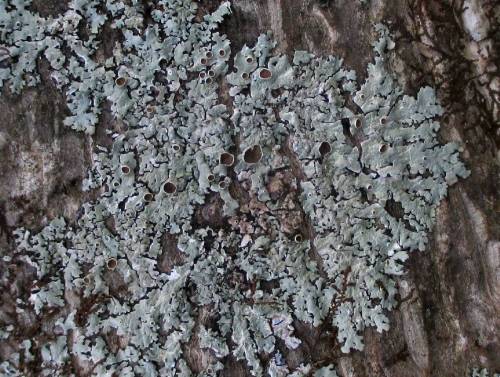Myelochroa galbinaI don’t want to make assumptions about you, I’m not about that. But for a bunch of
Myelochroa galbinaI don’t want to make assumptions about you, I’m not about that. But for a bunch of y’all, I bet if I asked you to picture a lichen, something that looks an awful lot like M. galbina would pop into your head. This foliose lichen is part of the extensive Parmeliaceae family, and a lot like us, it resembles a lot of other members of its family–most notably Hypotrachyna livida. So how can you tell you are actually looking at M. gamlbina? First, look for that rugose (roughened and wrinkled) thallus center, slender cilia along the lobe edges, and short-stalked simple rhizines on the bottom. Then, gently scratch at the thallus surface to peel away a bit of the upper cortex to reveal the fungal-hyphal layer, aka the medula, underneath. Don’t worry, lichens are tough, she’ll be fine. You’ll notice that it’s yellow! This is a pretty reliable indicator. M. galbina grows on trees and wood in temperate regions. images: source | sourceinfo: source | source | source -- source link
#lichen#lichens#lichenology#lichenologist#lichenized fungus#fungus#fungi#mycology#ecology#biology#bryology#botany#biodiversity#systematics#taxonomy#life science#environmental science#forestry#forest#natural science#nature#naturalist#beautiful nature#weird nature#myelochroa#myelochroa galbina#foliose lichen#green lichen




